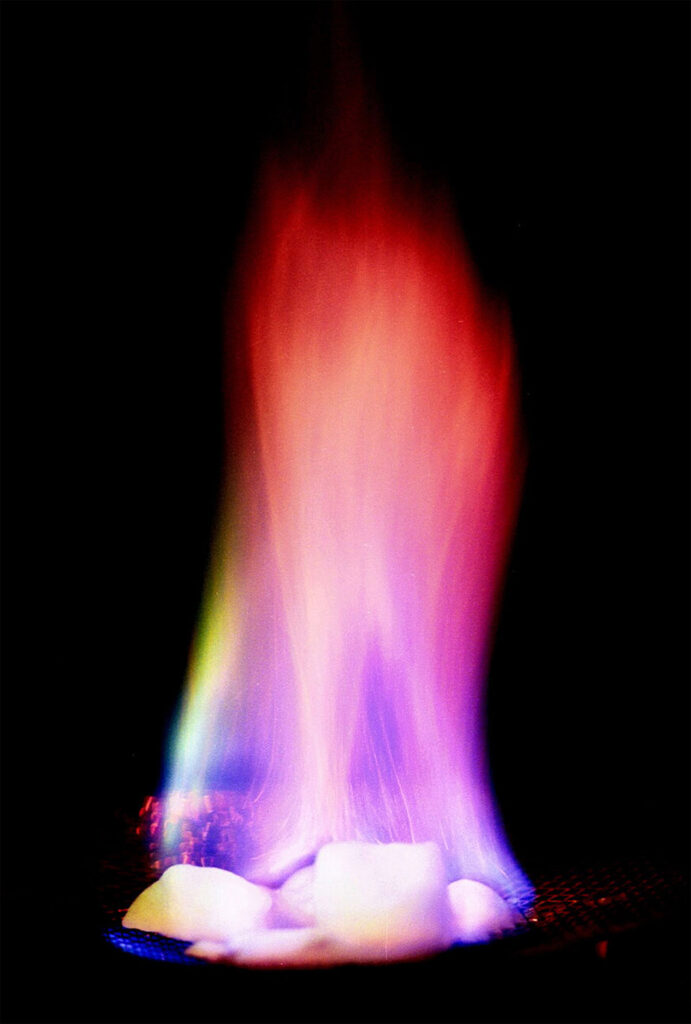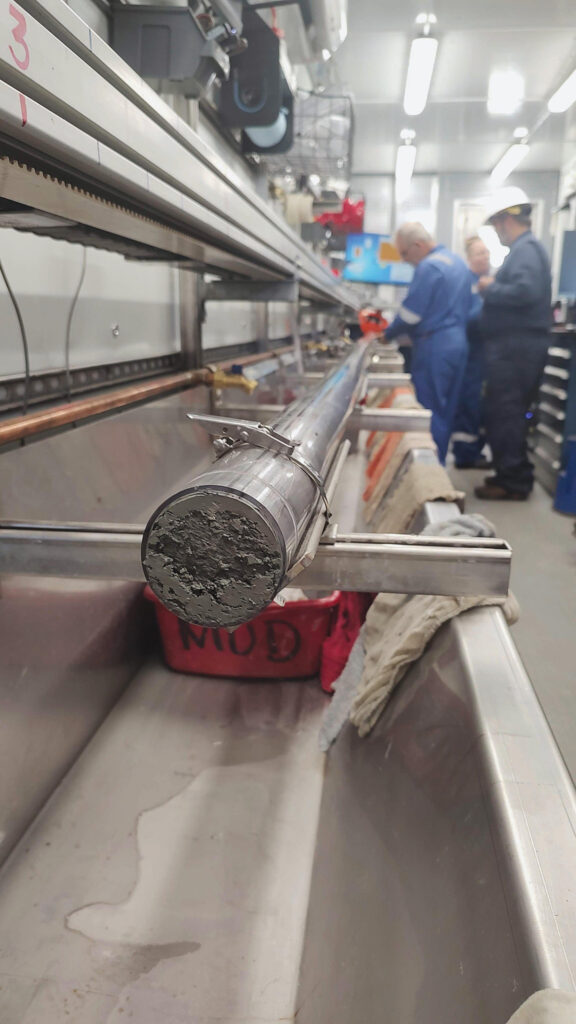UT Research on Methane Hydrate Could Transform the Energy Landscape

The middle of the Gulf of Mexico is a busier place than you might think. Its deep, blue waters are dotted with passing boats and energy platforms. Last summer, the Q4000 was one of them.
Most of the time, the Q4000 is an industry rig. It has two remotely operated vehicles for inspecting and servicing wellheads and observing boreholes on the ocean floor. A wall of shiny gold plaques in the vessel’s common room commemorates the rig’s role in capping the Deepwater Horizon oil spill.
But last year The University of Texas at Austin outfitted the Q4000 to new ends for a special mission. The rig was turned into a scientific drilling vessel, one that could take core samples of methane hydrate—a super-compressed form of gas trapped inside a cage of water ice, and one of the largest caches of carbon on the planet.

Walker Ridge, the target for the UT-led mission, is just one of many methane hydrate reservoirs under the seafloor of the Gulf and around the world. Layers of the mysterious substance are also found beneath ice sheets and Arctic permafrost. Scientists estimate that, globally, the supply of hydrates may hold anywhere from 5 percent to 22 percent of the Earth’s mobile carbon—the carbon that plays the most immediate role in shaping climate, environment, and life on Earth. For comparison, that is up to 10 times as much carbon as is in the atmosphere.
There are big questions about how methane hydrate may shape the energy landscape, with undersea reservoirs potentially holding an untapped supply of natural gas, particularly for energy-poor countries. The solid hydrate is incredibly energy-dense, with each unit of methane hydrate having 165 times the energy of an equivalent volume of gas at surface conditions.
But methane is also a potent greenhouse gas, with about 25 times the heat-trapping potential of carbon dioxide. There are big questions here, too, about what conditions may lead the methane to escape from its hydrate cage and seep into the wider world—and the impacts this could have on the environment and climate.

Answering those questions requires getting an up-close look at a methane hydrate reservoir from top to bottom. That’s exactly what Jackson School of Geosciences Professor Peter Flemings, the chief scientist of the mission, set out to do.
“One of the amazing things about The University of Texas is that if you say you want to do something really big, they will help you find a way to make it happen,” Flemings says. “There’s no bigger example I can think of than this.”
Joining Flemings offshore was a team of scientific collaborators from four other universities, the U.S. Geological Survey (USGS), and the technical company Geotek Coring. That’s not to mention the 108 additional crew members—the cooks, cleaners, drillers, and more—providing support so the mission could run 24 hours a day for a month straight. And offshore rigs don’t come cheap; it costs half a million dollars a day to keep the Q4000 running. The mission was made possible by a grant of more than $100 million from the U.S. Department of Energy, one of the largest ever awarded to a university. It reflects the importance of methane hydrate—and how much there is to discover about the mysterious, energy-rich substance at the bottom of the sea.
The mission wasn’t the first time Flemings set off to sea aboard the Q4000. In 2017, he led a mission on the vessel that extracted the first pressure cores of methane hydrate ever recovered from the Gulf of Mexico.
It’s impossible to keep methane hydrate intact unless it’s kept under pressure. If the pressure lessens, the methane escapes, bubbling away. While the 13 pressure cores recovered during the mission provided valuable scientific samples, the key accomplishment was a technological one: The scientists proved that the pressure-coring tool developed to keep the samples intact worked.

This success opened the door to a bigger science mission—one that could sample an entire methane hydrate reservoir instead of just a single layer within it. Flemings and the science team set their sights on taking cores—both pressurized and conventional—that spanned from the start of the…
Read More: UT Research on Methane Hydrate Could Transform the Energy Landscape

